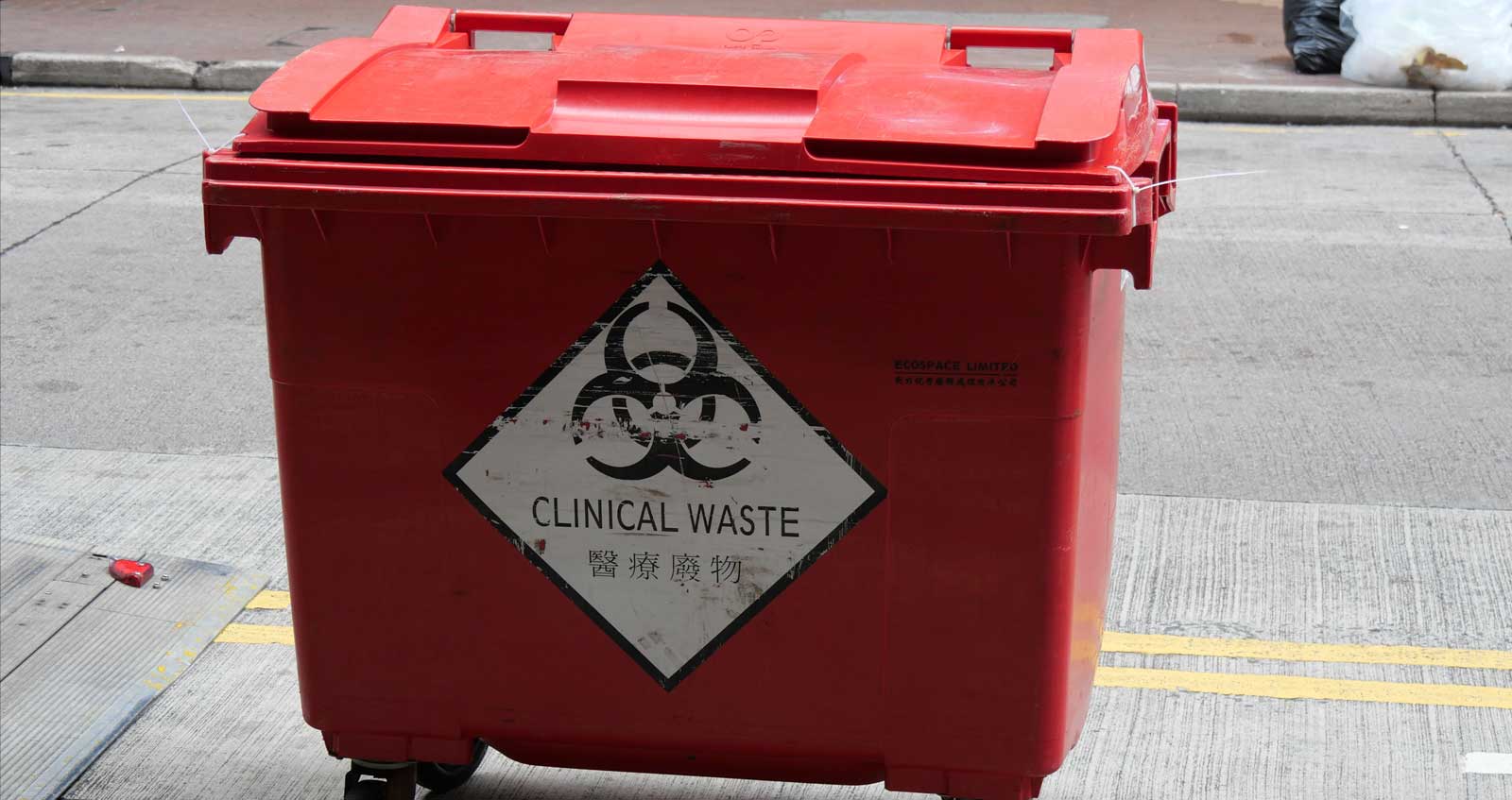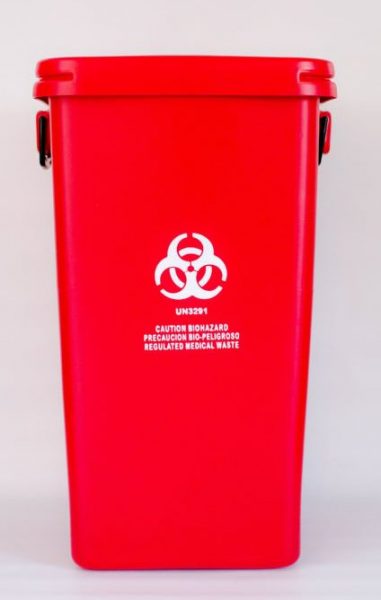Past Cleanup: Ensuring Safety with Professional Medical Waste Removal
Past Cleanup: Ensuring Safety with Professional Medical Waste Removal
Blog Article
Minimize Costs and Take Full Advantage Of Security: Effective Medical Waste Disposal Techniques
Reliable medical waste disposal approaches are vital for healthcare facilities to take full advantage of and decrease costs security. By implementing proper partition and categorization, effective product packaging and labeling, secure transportation and handling, efficient therapy and disposal approaches, and compliance with governing guidelines, healthcare centers can guarantee the liable and safe administration of clinical waste.

Proper Segregation and Categorization
Appropriate partition and classification are crucial components of efficient medical waste disposal approaches, ensuring the safety of health care workers, the public, and the environment - medical waste removal services. medical waste disposal services with WasteX. By dividing different kinds of clinical waste at the factor of generation, healthcare centers can lessen the risk of cross-contamination and possible damage to ecological communities and individuals
One of the crucial consider proper partition is the identification and category of medical waste. This includes categorizing waste into various groups, such as transmittable, dangerous, contaminated, or pharmaceutical waste. Each classification calls for particular handling, storage, and disposal techniques to prevent any kind of adverse results on human health and the setting.
Furthermore, proper segregation additionally consists of the usage of color-coded containers and labels to clearly identify and separate the various kinds of clinical waste. This helps health care employees and waste management workers to easily identify and handle the waste properly. For instance, red containers might be used for contagious waste, while yellow containers might be marked for contaminated materials.
Along with segregation, appropriate classification also includes the right product packaging and control of medical waste. This guarantees that waste is safely kept and moved without positioning any type of threats to people or the atmosphere. Making use of watertight and puncture-resistant containers, along with effectively securing and labeling them, assists to stop any unintentional direct exposure or release of harmful compounds.
Effective Packaging and Identifying
Effective packaging and labeling play an essential duty in ensuring the reliable and secure disposal of clinical waste. Appropriate product packaging is necessary to prevent leak, damage, or splilling during transportation and handling. It helps to decrease the threat of contamination and shields medical care employees, waste administration workers, and the environment from potential threats.
Clinical waste ought to be packaged in durable and leak-proof containers that are immune to puncture and damage. These containers must be appropriately sealed to prevent any kind of leak. Furthermore, the packaging needs to be able to withstand the problems of transportation, consisting of temperature level variations and harsh handling.
Classifying is equally vital as it offers essential details regarding the contents of the waste and any type of prospective threats connected with it. The tags must include the name of the health care facility, the sort of waste, and any special delivery instructions. Standardized and clear labeling ensures that waste administration personnel can quickly recognize and deal with the waste suitably.
Effective product packaging and labeling also help in the proper segregation and classification of medical waste. Clear labeling permits very easy identification of various waste streams, such as infectious waste, sharps, or pharmaceutical waste. This assists in streamlining the disposal process and making certain that the waste is treated or taken care of based on regulative standards.
Safe Transport and Handling
Guaranteeing the secure transportation and handling of medical waste is of utmost value in order to protect against any prospective wellness and ecological risks. Clinical waste, such as sharps, contaminated materials, and pharmaceutical waste, need to be effectively packaged and handled to reduce the danger of direct exposure to unsafe substances and pathogens.
Delivering clinical waste calls for conformity with strict regulations and guidelines set by ecological firms and neighborhood authorities. These laws intend to protect the health and wellness of workers involved in waste management and avoid the release of dangerous materials into the environment.
To guarantee safe transportation, medical waste should be placed in puncture-resistant and watertight containers that are effectively secured and classified. These containers ought to be secured in a manner that prevents spills or damage during transit (medical waste removal near me). Furthermore, it is vital to utilize specialized lorries equipped with ideal safety and security functions to carry medical waste. These lorries need to have appropriate ventilation and be developed to avoid leakage or contamination.
Managing clinical waste also requires appropriate training and adherence to safety and security methods. Workers associated with the handling of clinical waste ought to use proper individual protective devices (PPE) such as handwear covers, gowns, and masks to lessen the threat of exposure. They need to additionally adhere to strict hygiene practices to stop the spread of infections and make sure the risk-free disposal of waste.
Efficient Therapy and Disposal Techniques
Carrying out ideal therapy and disposal approaches is crucial in managing clinical waste properly and decreasing possible wellness and ecological threats. Clinical waste, that includes sharps, transmittable products, chemicals, and pharmaceuticals, can position significant hazards otherwise taken care of and disposed of correctly. There are several therapy and disposal approaches offered that stick to regulatory standards and advertise safe practices.
One common method is incineration, which involves burning the waste at high temperatures. Incineration works in ruining microorganisms and minimizing the quantity of waste, yet it can launch damaging contaminants into the air if not properly controlled. Consequently, it is very important to make use of modern burners furnished with discharge control innovations.
One more technique is autoclaving, which uses steam and stress to disinfect the waste. Autoclaving is efficient in killing microorganisms and minimizing the volume of waste, yet it calls for cautious monitoring and maintenance to make certain appropriate functioning. The sterilized waste can after that be securely thrown away in a garbage dump.
Chemical treatment is an additional choice, which involves making use of disinfectants or various other chemicals to counteract pathogens. This technique is typically made use this post of for fluid waste, such as laboratory samplings. It is crucial to use ideal chemicals and follow correct procedures to make sure effective therapy and avoid ecological contamination.

Conformity With Regulatory Guidelines
Complying with governing guidelines is vital in ensuring appropriate conformity with medical waste disposal methods. These standards are implemented to shield public health, stop ecological contamination, and preserve office security. Conformity with governing guidelines is important for medical care facilities, as non-compliance can result in charges, penalties, and reputational damages.
Regulative standards lay out the proper handling, storage, transportation, and disposal of medical waste. They supply details instructions on packaging requirements, labeling, and record-keeping. These standards additionally resolve the segregation of different waste streams, such as sharps, infectious waste, and pharmaceutical waste. Healthcare facilities should make sure that their waste monitoring techniques straighten with these standards to decrease the risk of exposure to hazardous materials and prevent the spread of infections.
To maintain conformity, medical read more care centers must develop extensive waste management programs that consist of team training, routine audits, and recurring tracking. It is vital to maintain current with any type of modifications or updates to regulative standards, as techniques may advance in time. By remaining informed and carrying out appropriate procedures, health care facilities can reduce the possibility for governing infractions and protect the health and wellness of their staff, patients, and the bordering area.
Verdict
Finally, executing reliable clinical waste disposal approaches is vital for reducing prices and making best use of security. Proper partition and categorization, effective product packaging and labeling, risk-free transport and handling, and efficient therapy and disposal methods are crucial actions to ensure conformity with regulatory standards. medical waste removal service. By sticking to these techniques, health care centers can safeguard the setting and public health while likewise minimizing economic concerns connected with medical waste administration
By carrying out proper segregation and categorization, reliable product packaging and labeling, safe transportation and handling, effective therapy and disposal approaches, and conformity with regulatory guidelines, health care centers can make certain the accountable and secure management of medical waste. Red containers may be utilized for transmittable waste, while yellow containers might be marked for hazardous waste.
Clear and standardized labeling makes sure that waste monitoring employees can conveniently identify and deal with the waste properly. (medical waste disposal services with WasteX)
Clear labeling allows for Full Report easy recognition of different waste streams, such as infectious waste, sharps, or pharmaceutical waste. These standards likewise deal with the segregation of various waste streams, such as sharps, transmittable waste, and pharmaceutical waste.
Report this page